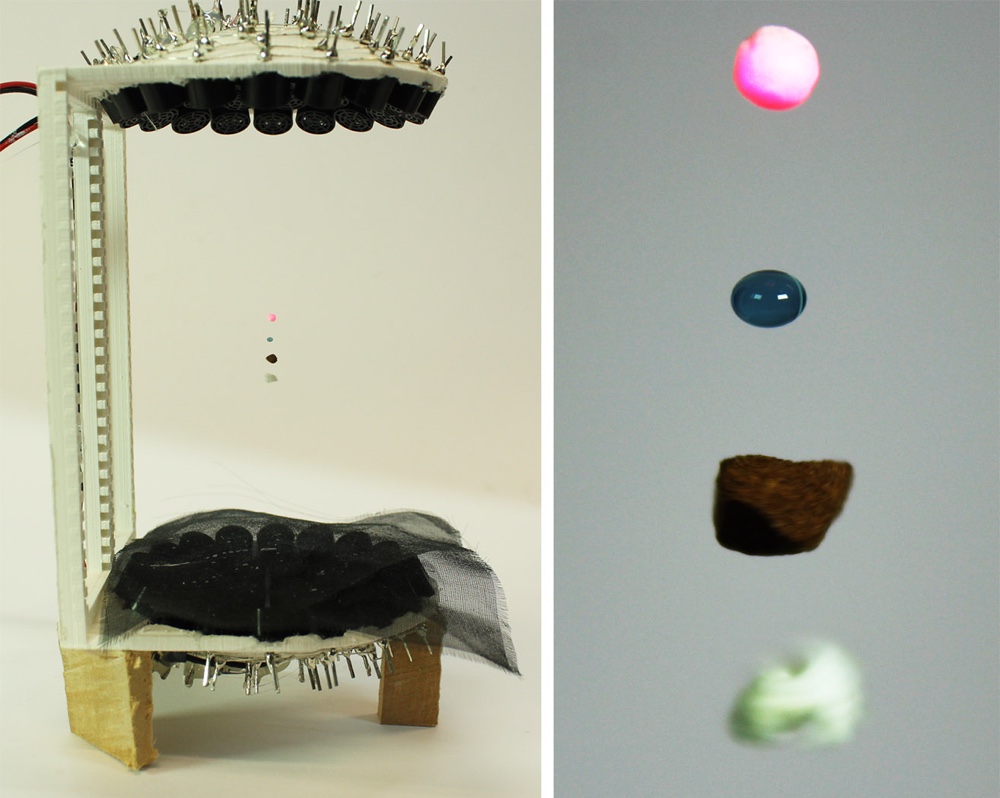DIY Insect Levitator Brings Weird Experiments to Your Home

If you've ever dreamed of suspending a spider in thin air or floating an ant in midair (and who hasn't?), new research has your back.
In a new open-access paper published in the journal Review of Scientific Instruments, researchers from the University of Bristol in the United Kingdom lay out the instructions for making an at-home acoustic levitator. The gadget requires a microprocessor called an Arduino (available online) and access to a 3D printer, along with a few other pieces of hardware. The result is a device that uses the pressure of ultrasound waves to "float" tiny objects like water droplets, Styrofoam dots or even insects.
Acoustic levitation is nothing new, but until now, the levitators required precision-made parts and operated at high voltages. Asier Marzo, a mechanical engineer at the University of Bristol, and his colleagues developed a levitator that works with commercially available parts at low voltages. With just 10 watts of power, the levitator can trap objects up to about 0.15 inches (4 millimeters) in diameter, Marzo and his colleagues wrote in their paper. [Watch Sound Waves Cause Water Droplets to Levitate (Video)]
The researchers also posted user-friendly instructions online. They previously developed a sound-wave "tractor beam" that can pull objects toward it.
Acoustic levitation is about more than befuddling your neighborhood ants: Researchers can use levitation to study physical properties in microgravity, Marzo and his colleagues wrote. Because no container is used to hold the object, samples can be examined without the complications of interactions with a test tube or other repository, the researchers said.
"Levitating samples in midair can improve diagnosis from blood samples and detection of the structure of molecules," Marzo said in a statement. "Usually, a sample on a microscope slide is illuminated with X-rays, lasers or another type of radiation so the reflected radiation can be analyzed. However, no matter how transparent the microscope slide is, it will always interfere with the test. On the contrary, if the sample is levitated, all the reflections are going to be from the sample."
So how does this levitating device work?
Sign up for the Live Science daily newsletter now
Get the world’s most fascinating discoveries delivered straight to your inbox.
The levitators position an array of speakers so that the sound waves interact to form a "standing wave," or one that vibrates up and down without traveling. Certain points on standing waves, called nodes, barely move. These nodes trap tiny particles or objects in the homemade levitators — so the particles are floating at those nodes.
The device consists of two disks of 36 sound transducers each, controlled by the Arduino and amplifier. Other than the 3D-printed plastic frame that holds the transducers, the rest of the parts can be bought off the shelf.
"Now, not only scientists but also students can build their own levitator at home or school to experiment and try new applications of acoustic levitation," Marzo said.
Original article on Live Science.

Stephanie Pappas is a contributing writer for Live Science, covering topics ranging from geoscience to archaeology to the human brain and behavior. She was previously a senior writer for Live Science but is now a freelancer based in Denver, Colorado, and regularly contributes to Scientific American and The Monitor, the monthly magazine of the American Psychological Association. Stephanie received a bachelor's degree in psychology from the University of South Carolina and a graduate certificate in science communication from the University of California, Santa Cruz.









